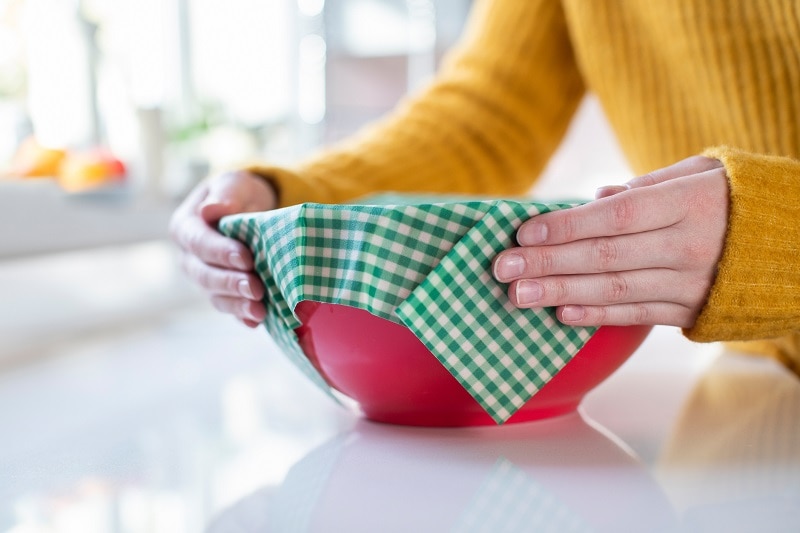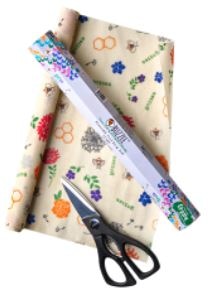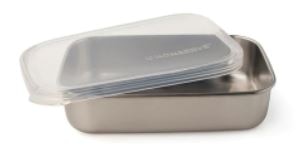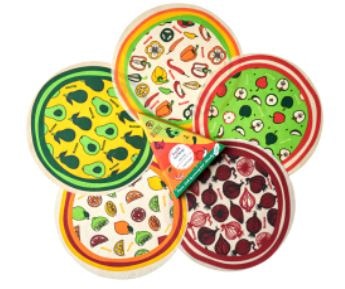Habits are tricky.
I say this not because habits are hard to give up, as we often hear, but because we have so many habits that we never call habits. Instead, we think of our actions as rational, expected, the normal thing to do. Nonetheless, they’re habits — habituated behavior. Here’s one: separating laundry into darks and lights before you wash it.
Here’s another, which I had for much of my adult life and realized I was following because … I have no idea, really, except that I did it. I’m talking about the mundane act of using plastic wrap to cover a tub of food or wrap a sandwich or bind leftovers.
Plastic wrap’s marketing started decades ago and was so ingenious that we often refer to the clear film by the brand that declared having a roll of clingy plastic absolute: Saran Wrap. What we did not realize was how insidious — and unnecessary — plastic wrap is.
Plastic, I’m sure you’ve heard, is generally terrible for the environment and your health (to be sure, it has been critically helpful for certain medical uses).
“We have a full-on plastic pollution crisis, and at least 15 million metric tons of plastic are entering our oceans every year — that estimate is likely quite conservative,” says Eve Fox, digital director of Beyond Plastics, an education and advocacy organization based at Bennington College’s Center for the Advancement of Public Action. “Plastic is also a major driver of the climate crisis. If plastic were a country, it would be the world’s fifth biggest greenhouse gas emitter, behind China, the U.S., India and Russia.”
You can’t recycle plastic wrap after you’ve mucked it up with mayo, and, truth is, most plastic ends up in a waste heap — “91% of all plastics ever made have not been recycled, and that is probably being generous,” Fox notes.
So, that sheet of plastic wrap you sealed your soup with will sit in a landfill for ages, leaching chemicals that eventually can find their way to groundwater. Or it’ll get incinerated, which releases greenhouse gas emissions and toxic chemicals into the air we breathe.
But I come bearing good news too: Abandoning plastic wrap is simple, its alternatives more effective. Here are direct substitutes — all of which you probably already have:
- Plastic cereal bags
- Plastic bread bags
- Plastic tortilla bags
- Plastic nut bags (should I keep going?)
You have an endless supply of plastic bags that house food you purchase, which is actually sad and awful.
“We live in a relentlessly commercialized society where consumerism is practically a way of life,” Fox says. “This is because companies are always seeking greater profits, not because we all need more stuff in our lives. But a thoughtfully crafted ‘less’ really can be more. Reuse and refill may not be exciting, but it’s so much cooler, smarter and saner than our consumer society’s single-use approach to everything.”
So, here’s the upside: If you have sheet-like plastic in-hand already, you might as well use it. Cut it to cover that jug of whatever, and then seal it with a rubber band (I’m assuming you have rubber bands). Not only are you reusing, but the plastic you repurpose is probably thicker than plastic wrap, which means odors are better contained and food stays fresher.
- A plate
So banal. The humble plate can sit atop a bowl of salad, veggies, fruit or greens.
- Plastic lids
Unfortunately, we’re back to the plastic you already have. Yogurt lids, baking-powder caps and the like fit snugly on top of glasses, cups and smaller bowls.
There are additional ways to store food without plastic wrap, some of which might require spending a little extra cash.
- Naturally based wraps
Wrap made out of beeswax and other sustainable materials is a decent alternative to plastic wrap, not only because it can be reused many times and is gentler on the environment at the end of its life but also because it’s a healthier agent to have against your food.
- Glass or stainless steel containers
Glass and stainless steel isolate smelly stuff and are more healthful against your food than plastic. But even with that, you’re unlikely to escape a plastic lid. At best it will be silicone, but at least silicone is a more virtuous type of plastic.
Regardless, it makes a heck of a lot more sense to store leftover avocado in an airtight glass container than try to swaddle it in plastic wrap or a repurposed plastic bread bag. And if you don’t want to buy glass or stainless steel containers, endeavor to buy food in glass containers (pickles and sauerkraut come to mind), and then reuse those glass containers to store food.
In sum, first look at what you have, and see if you can engineer it to replace those long flimsy sheets of frustration that come wrapped around a cardboard roll. While you’re at it, you might realize you also can eliminate baggies.
It’s better than being stuck in a habit you didn’t even know was a habit, especially when leaving it makes the planet a little healthier for yourself, your offspring and all those animals that have no say in human behavior.
Journalist Mitra Malek writes and edits content related to wellness and sustainability. She has had the same box of Saran Wrap since at least 2016 and isn’t sure when she’ll use it again, but she won’t throw it away.




